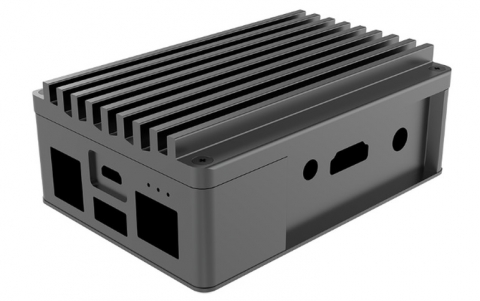
Darpa to Invest in New Chips Designs for Real Time Machine Learning
DARPA anounced the Real Time Machine Learning (RTML) program, which seeks to reduce the design costs associated with developing ASICs tailored for emerging ML applications by developing a means of automatically generating novel chip designs based on ML frameworks.
The current generation of machine learning (ML) systems are using graphics-processing units (GPU) in order to process and train using large data sets. As the field of artificial intelligence looks towards advancing beyond today’s ML capabilities, pushing into the realms of “learning” in real-time, new levels of computing are required. Highly specialized Application-Specific Integrated Circuits (ASICs) show promise in meeting the physical size, weight, and power (SWaP) requirements of advanced ML applications, such as autonomous systems and 5G. However, the high cost of design and implementation has made the development of ML-specific ASICs impractical for all but the highest volume applications.
“A critical challenge in computing is the creation of processors that can proactively interpret and learn from data in real-time, apply previous knowledge to solve unfamiliar problems, and operate with the energy efficiency of the human brain,” said Andreas Olofsson, a program manager in DARPA’s Microsystems Technology Office (MTO). “Competing challenges of low-SWaP, low-latency, and adaptability require the development of novel algorithms and circuits specifically for real-time machine learning. What’s needed is the rapid development of energy efficient hardware and ML architectures that can learn from a continuous stream of new data in real time.”
With the Real Time Machine Learning (RTML) program, DARPA plans to reduce the design costs associated with developing ASICs tailored for emerging ML applications. The goal of the RTML program is to create a compiler – or software platform – that can ingest ML frameworks like TensorFlow and Pytorch and, based on the objectives of the specific ML algorithms or systems, generate hardware design configurations and standard Verilog code optimized for the specific need. Throughout the lifetime of the program, RTML will explore the compiler’s capabilities across two critical, high-bandwidth application areas: 5G networks and image processing.
The RTML compiler provides a platform for prototyping and testing fundamental ML research ideas that require novel chip designs. As such, DARPA plans to collaborate with the National Science Foundation (NSF) on this effort. NSF is pursuing its own Real Time Machine Learning program focused on developing novel ML paradigms and architectures that can support real-time inference and rapid learning. After the first phase of the DARPA RTML program, the agency plans to make its compiler available to NSF researchers to provide a platform for evaluating their proposed ML algorithms and architectures. During the second phase of the program, DARPA researchers will have an opportunity to evaluate the compiler’s performance and capabilities using the results generated by NSF. The overall expectation of the DARPA-NSF partnership is to lay the foundation for next-generation co-design of RTML algorithms and hardware.
RTML is part of the second phase of DARPA’s Electronics Resurgence Initiative (ERI) – a five-year, upwards of $1.5 billion investment in the future of domestic, U.S. government, and defense electronics systems.





















